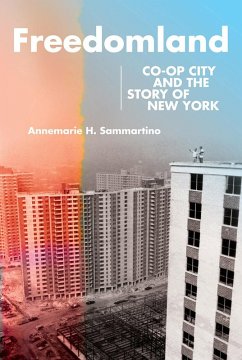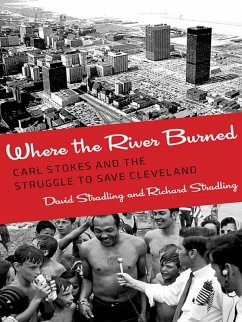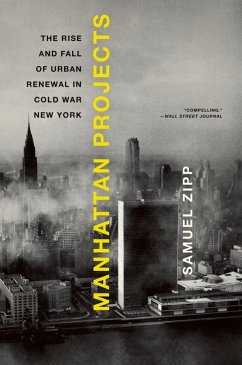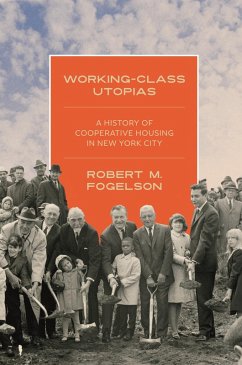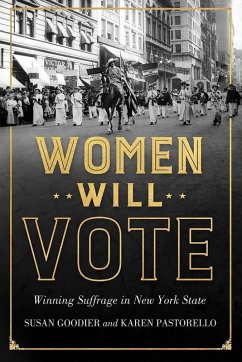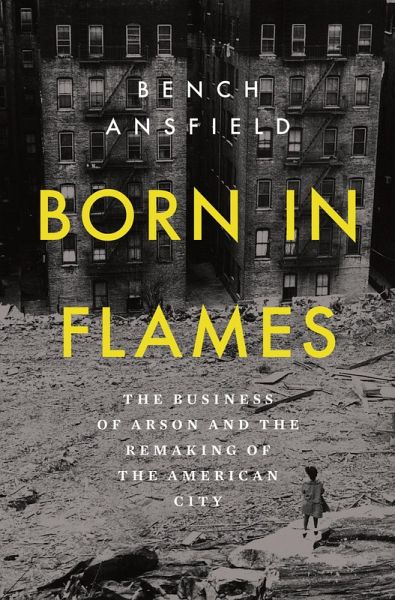
Born in Flames (eBook, ePUB)
The Business of Arson and the Remaking of the American City
Erscheint vor. 19.08.25
16,95 €
inkl. MwSt.
Unser Service für Vorbesteller - dein Vorteil ohne Risiko:
Sollten wir den Preis dieses Artikels vor dem Erscheinungsdatum senken, werden wir dir den Artikel bei der Auslieferung automatisch zum günstigeren Preis berechnen.
Weitere Ausgaben:

PAYBACK Punkte
8 °P sammeln!
A young historian's superlative debut . . . this excellent book delivers the truth about 'the burning years." Kirkus Reviews (starred review) [R]iveting . . . an outstanding exposé of the predatory capitalist machinations behind the 'Bronx is burning' saga."Publishers Weekly (starred review) The explosive account of the arson wave that hit the Bronx and other American cities in the 1970sand its legacy today.Ladies and gentlemen, the Bronx is burning! That legendary and apocryphal phrase, allegedly uttered by announcers during the 1977 World Series as flames rose above Yankee Stadium, seemed t...
A young historian's superlative debut . . . this excellent book delivers the truth about 'the burning years." Kirkus Reviews (starred review)
[R]iveting . . . an outstanding exposé of the predatory capitalist machinations behind the 'Bronx is burning' saga."Publishers Weekly (starred review)
The explosive account of the arson wave that hit the Bronx and other American cities in the 1970sand its legacy today.
Ladies and gentlemen, the Bronx is burning! That legendary and apocryphal phrase, allegedly uttered by announcers during the 1977 World Series as flames rose above Yankee Stadium, seemed to encapsulate an entire era in this nation's urban history. Across that decade, a wave of arson coursed through American cities, destroying entire neighborhoods home to poor communities of color.
Yet as historian Bench Ansfield demonstrates in Born in Flames, the vast majority of the fires were not set by residents, as is commonly assumed, but by landlords looking to collect insurance payouts. Driven by perverse incentivesnew government-sponsored insurance combined with tanking property valueslandlords hired torches, mostly Black and Brown youth, to set fires in the buildings, sometimes with people still living in them. Tens of thousands of families lost their homes to these blazes, yet for much of the 1970s, tenant vandalism and welfare fraud stood as the prevailing explanations for the arson wave, effectively indemnifying landlords.
Ansfield's book, based on a decade of research, introduces the term brownlining for the destructive insurance practices imposed on poor communities of color under the guise of racial redress. Ansfield shows that as the FIRE industriesfinance, insurance, and real estate eclipsed manufacturing in the 1970s, they began profoundly reshaping Black and Brown neighborhoods, seeing them as easy sources of profit. At every step, Ansfield charts the tenant-led resistance movements that sprung up in the Bronx and elsewhere, as well as the explosion of popular culture around the fires, from iconic movies like The Towering Inferno to hit songs such as Disco Inferno. Ultimately, they show how similarly pernicious dynamics around insurance and race are still at play in our own era, especially in regions most at risk of climate shocks.
[R]iveting . . . an outstanding exposé of the predatory capitalist machinations behind the 'Bronx is burning' saga."Publishers Weekly (starred review)
The explosive account of the arson wave that hit the Bronx and other American cities in the 1970sand its legacy today.
Ladies and gentlemen, the Bronx is burning! That legendary and apocryphal phrase, allegedly uttered by announcers during the 1977 World Series as flames rose above Yankee Stadium, seemed to encapsulate an entire era in this nation's urban history. Across that decade, a wave of arson coursed through American cities, destroying entire neighborhoods home to poor communities of color.
Yet as historian Bench Ansfield demonstrates in Born in Flames, the vast majority of the fires were not set by residents, as is commonly assumed, but by landlords looking to collect insurance payouts. Driven by perverse incentivesnew government-sponsored insurance combined with tanking property valueslandlords hired torches, mostly Black and Brown youth, to set fires in the buildings, sometimes with people still living in them. Tens of thousands of families lost their homes to these blazes, yet for much of the 1970s, tenant vandalism and welfare fraud stood as the prevailing explanations for the arson wave, effectively indemnifying landlords.
Ansfield's book, based on a decade of research, introduces the term brownlining for the destructive insurance practices imposed on poor communities of color under the guise of racial redress. Ansfield shows that as the FIRE industriesfinance, insurance, and real estate eclipsed manufacturing in the 1970s, they began profoundly reshaping Black and Brown neighborhoods, seeing them as easy sources of profit. At every step, Ansfield charts the tenant-led resistance movements that sprung up in the Bronx and elsewhere, as well as the explosion of popular culture around the fires, from iconic movies like The Towering Inferno to hit songs such as Disco Inferno. Ultimately, they show how similarly pernicious dynamics around insurance and race are still at play in our own era, especially in regions most at risk of climate shocks.
Dieser Download kann aus rechtlichen Gründen nur mit Rechnungsadresse in A, D ausgeliefert werden.





